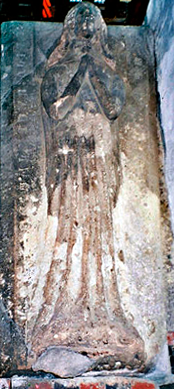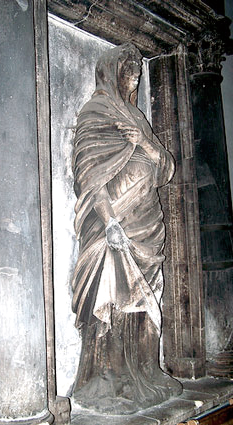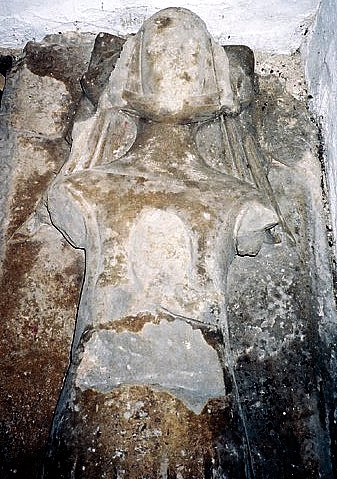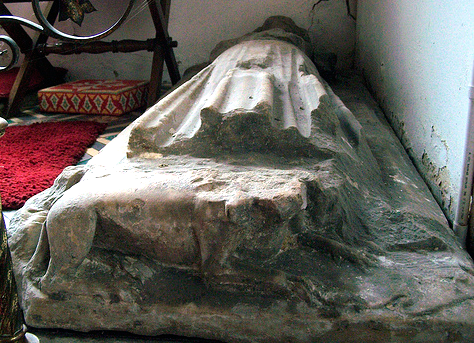|
|
||||||||||||
|
|
 |
Holme - St Giles (Also called Holme by Newark) |
 |
| Park in the lane near church in a
suitable area. The church is normally unlocked but should it not
be the names and addresses of two nearby keyholders are given
O/S Ref: SK 803 591 |
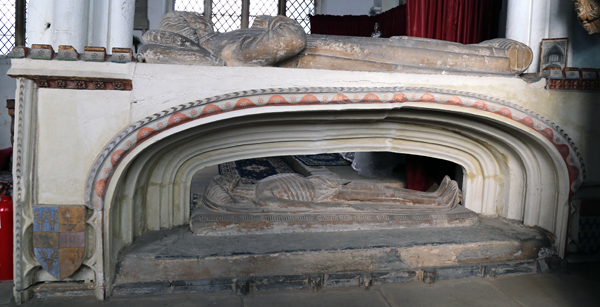 |
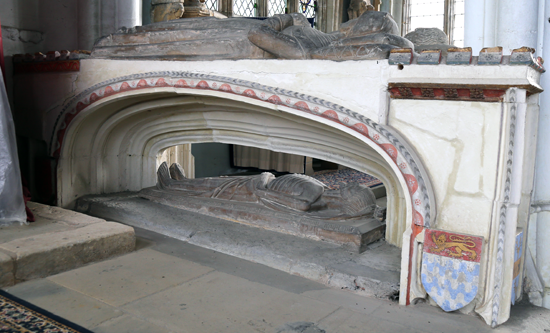 |
 |
 |
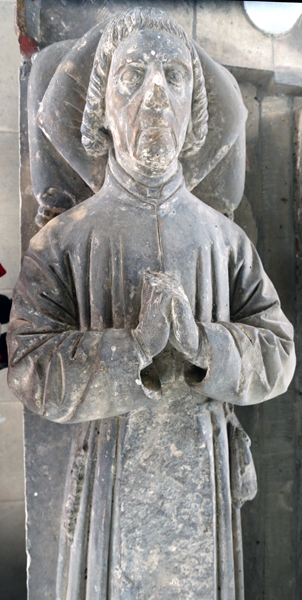 |
 |
 |
|
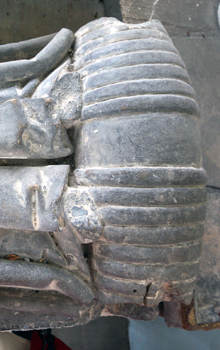 |
John Barton (1491) & Isabella (Gernon)
He
rebuilt the chancel and added the south chapel to house the
tomb c 1485. A two tier tomb with the two effigies on the
upper part but a single shrouded corpse on the lower. On the
side of the slab on which the latter rests is a Latin
inscription form Job, which, in translation reads: 'Pity me you
at least my friends for the hand of the Lord has touched me'.
The shields were blank cerainly before the restoration of the
church in 1932 but were repainted at that time with heraldry
copied from the Barton shields in the porch. Left: John Barton rests his feet on a barrel or tun. On the side view (above) can be seen a bar across the top of the barrel. He wasn't a brewer but rather this is a rebus - a visual pun on a name: so bar plus tun equals Barton. A tun is eight barrels
|
||
| Ratcliffe-on-Soar - Holy Trinity |
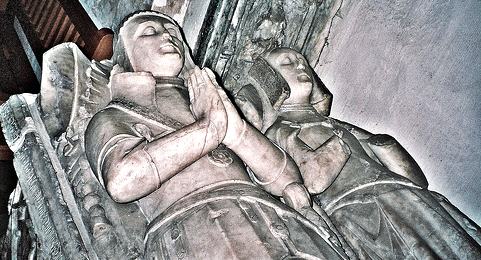 |
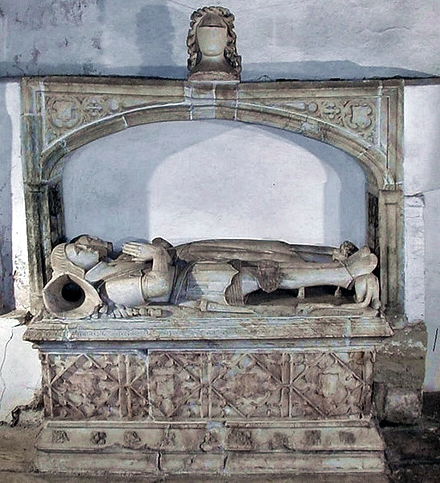 |
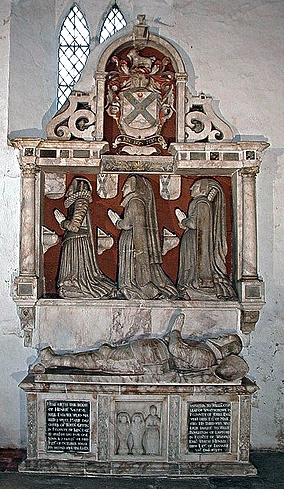 |
|
|
Above & near right:
Ralph Sacheverall (1539) &
Cecily (1528), his first wife. Chellaston
alabaster, attributed to Parker of Burton-on-Trent.
Traces of paint remain. Far right: Henry Sacheverall (1665). His three wives kneel all in a row above his recumbent figure. |
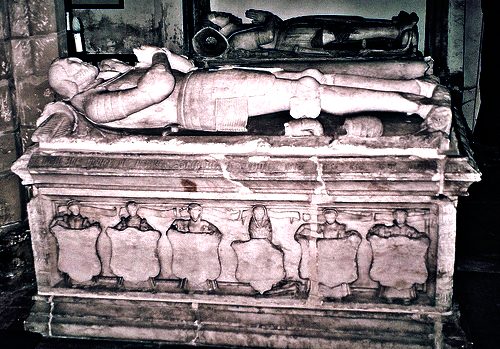 |
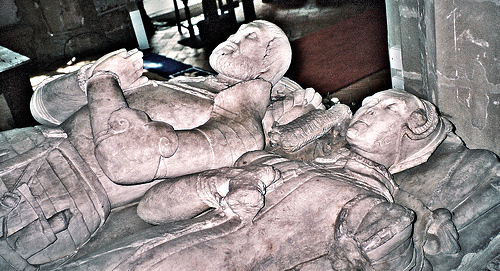 |
| Above & left: Henry
Sacheverall I (1558) and one of his three wives.
Inscription. Chellaston alabaster, possibly from the
Royley workshop. Inscription in English. NB The tomb of Henry III is not shown in this section. |
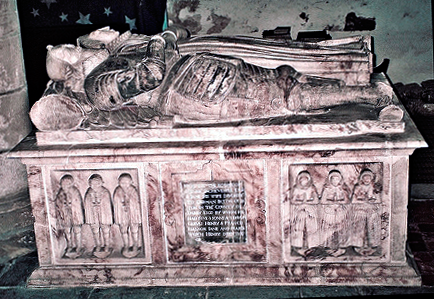 |
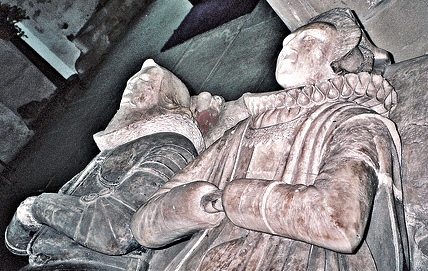 |
||
| Henry Sacheverell II (1585) & Jane (née Irton) Jane was the great aunt of General Henry Ireton, the Parliamentary soldier and Cromwell's son-in-law. The inscripton is incomplete, no date being shown and Jane's title being incorrect, possibly becaue the tomb was not completed until 1625. Fauld alabaster possibly from the Hollemans workshop. | |||
| A Series of Incised Slabs | |||
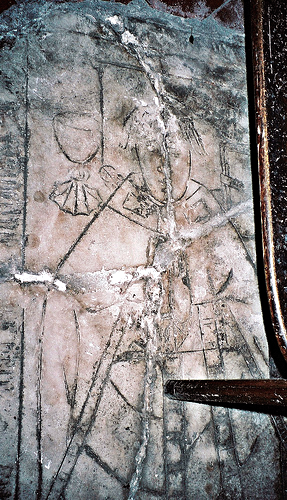 |
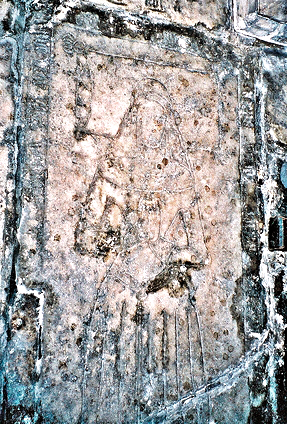 |
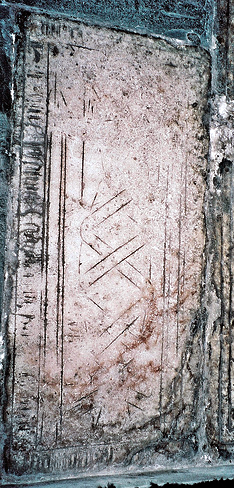 |
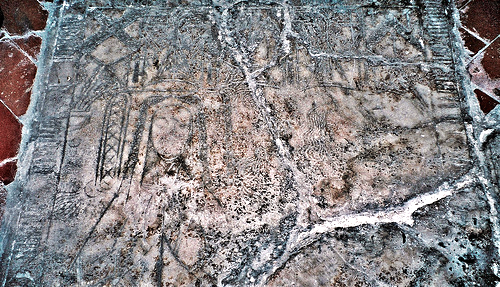 |
| John Prescot (1497) Vicar appointed by the Priory of Burscough,a penurious establishment in Lancashire, which had aquired Ratcliffe about 1354 from Norton in Cheshire in a devious deal which resulted in Ratcliffe being attacked in 1381. | Isabella Babbington (1487) of Kingston on Soar; the latter was a chapel of Ratcliffe but burials were not allowed until 1536. (Her husband, John, was killed at Bosworth by Thomas Blount but this is believed to have been a mis-indentification of the target, really being another John Babbington of Chilwell.) | Alabaster slab showing chrisom child. The inscription states that this is Edmund Edmundson (1519) This surname is otherwise unknown in the village. | Sir Thomas Findern (1524) & Elizabeth (Sacheverall) He fought at the Battle of Stoke, effectively the last battle of the Wars of the Roses, field under Henry VII. His will directed his executors to bury him at the entrance to the chapel where he still lies. |
| Other Monuments |
In the chapel there is a worn alabastre slab which Thoroton was able to read in 1676: Cygyft Johan fil and heire Tho Basset, Fitz S John Basset de Dr--- la feme Sir Ralph Shirley fitz and heire Hugh Shirley ... John son and heire to Thomas Basset son of Sir John Basset of Dr[aycott] the wife of Sir Ralph Shirley son and heire of Hugh Shirley This is clearly a woman and likely to be Isobel (Basset) who married Ralph Shirley. The ownership of Radcliffe by the Shirleys was for a comparatively short time namely 1402-1432 and they only lived at the manir house for a short times in 1431/2 in which year Isobel died. The Bassets aquired Ratcliffe in 1313 before it fell to the Shirleys by marriage. |
| Screveton - St Wilfred |
 |
 |
| Richard Whalley (1583) Note the whale at his feet: a rebus (pun on his name) 'Behold his Wives were number three: Two died of them died in right good fame: The third this Tomb erected, For him who well deserv'd the same...' He was 'servant' of Thomas Cromwell and then of Lord Protector Somerset; he was imprisoned for appropriating crown funds as Crown Receiver for Yorkshire, again for illegal alchemical activities, managing to rise and fall each time. His wives were: Lora (Brookman) with whom five children; Ursula (Thwaites) with whom thirteen children; and Barbara (Cope), with whom seven children. All kneel behind and above. Alabaster; now under tower, formerly in chancel |
| Shelford - St Peter |
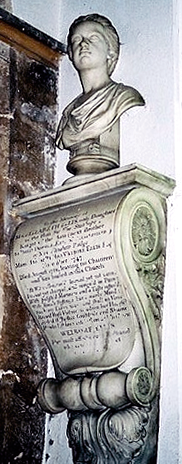 |
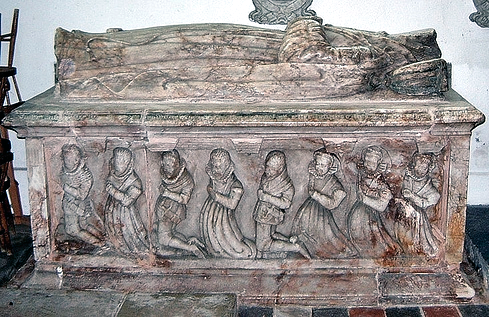 |
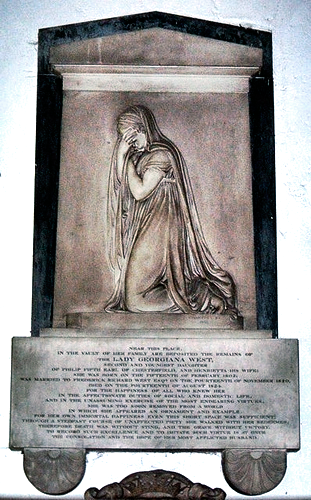 |
| Left: Mrs Elizabeth Welbore-Ellis (1761)
By Nollekens Above: Lady Anne Stanhope (1587) Her husband was Sir Michael Stanhope, with whom she had eleven children; he was implicated in the events that led to the downfall of Lord Protector Somerset, his brother-in-law, arrested and, although aquitted of high treason, convicted of felony and beheaded in 1552. Inscription, alabaster Left:: Right: 'Near this place, in the vault of her family are deposited the remains of' Lady Georgiana West (1824) By Chantrey |
 |
 |
Southwell Minster |  |
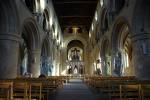 |
| Southwell Minster is a
Cathedral of the Modern Foundation, the see being founded in
1884 At the Reformation it was a collegiate church. There is free parking for two hours in the car park opposite. Entrance to the Minster is free the there is a curious charge for Photography of £4.40. |
| Nave and Aisles |
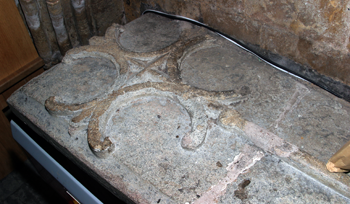 |
 Left: Foliated cross in niche by the welcome desk. This is unfortunately used as a store for files etc, as can be seen in the photograph above. Right: Troop Sgt-Mjr William Samuel Sharpe (1838) of the 7th Dragoon Guards. He died in the Punjaub. |
 |
 |
 |
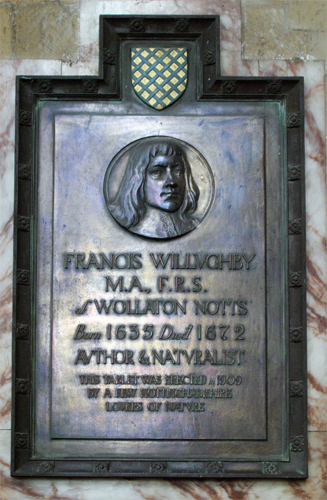 |
 |
| Left and
above: Sir Edwyn
Hoskyns Bt (1925) The second
Bishop of Southwell. By W. Reynolds
Stephens Right: Modern bronze tablet to Francis Willoughby MA FRS (1672) naturalist Far right:James StJohn Trebeck MA (1904) Rector of 1881-1900 of the Collegiate Church and First Sub-Dean of the Cathedral |
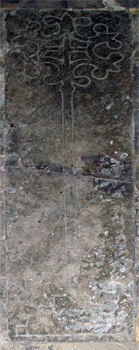 |
 |
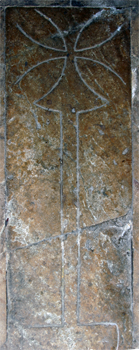 |
 |
 |
 |
 |
| Several incised slabs and
two brass matrices in
the floor of the nave. Several Archbishops of York resided at Southwell and some of these were buried in the Minster. These were: Godfrey de _ham (1265) Thomas de Corbridge (1304) William Booth (1464) Lawrence Booth (1480) Edwin Sandys (1588) The monument of the last of these is shown below; the unamed effigy (at end of the section) certainly and some of the crosses and brass matrices probably may relate to the others. The matrix above (bottom row, right) seems a likely contender. |
|
| North Transept |
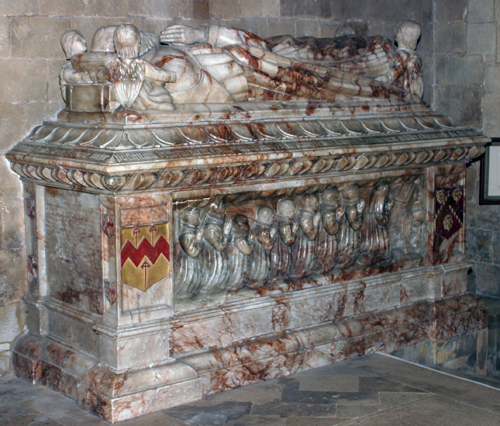 |
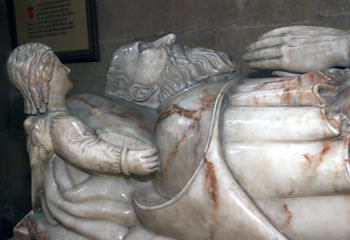 |
 Edwin Sandys (1588) Alabaster. One of the founders of Low Church Anglicanism, insensitively represented in the robes he disliked. He was arrested and imprisoned on the accession of Mary Tudor but escaped from prison. He returned on the accession of Elizabeth and became successively Bishop of Worcester, Bishop of London and Archbishop of York |
 |
Chancel | |
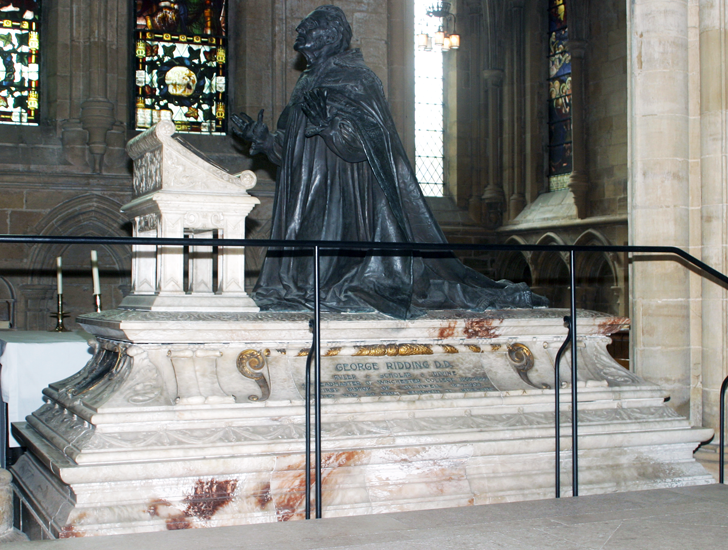 |
||
| Bishop Ridding (1904) Bronze/ alabaster. Headmaster of Winchester and first Bishop of Southwell 1884-1904. Composition by Caröe; bronze by Pomeroy |
 |
South Transept |
 |
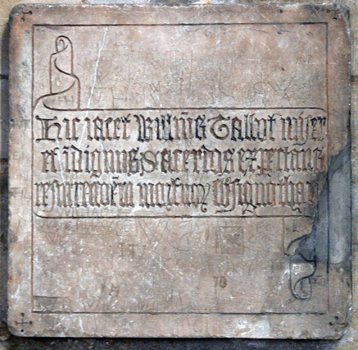 |
||
|
Left:Frank Russell DSO DD
Barry (1976) Bishop 1941-1963 Above: Talbot Right: Memorial to Father Reginald Tribe (1952) Director SSM. Carving by Alan Coleman; formerly in Kelham Great Chapel |
| Choir - South Aisle |
 |
| Damaged effigy of an archbishop. Alabaster c 1450 |
| Staunton-in-the-Vale - St Mary |
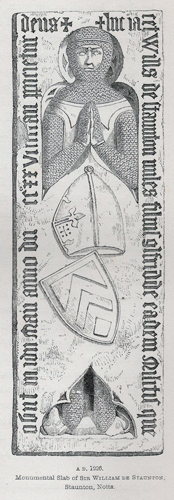 Above: 'Here lies William de Staunton, knight, son of Sir Geoffrey of the same, who died on the third day before the Ides of May 1326. On whose soul may God have mercy' Right top: Series of damaged 14 th century effigies of the Staunton family |
 |
||
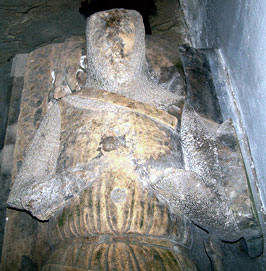 Above: 14th century knight Right: Joan, Lady Staunton (1365) Far right: 'In memory of Job Staunton Charlton. eldest son of Gilbert Charlton Esq and Anne eldest daughter of Harvey Staunton ehose ancesters inherited the estate from the time of the Saxons in 1066' By Westmacott 1811 |
 |
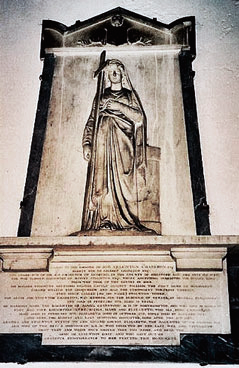 |
|
|
|
|||||||||
| Whatton - St John of Beverely |
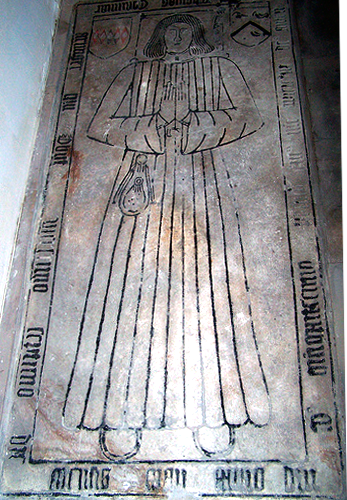 |
 |
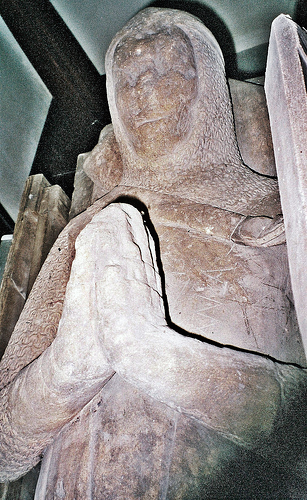 |
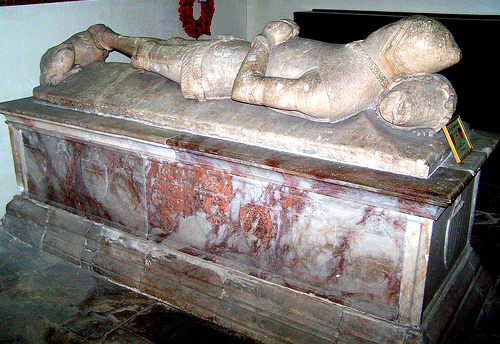 |
|||
| Sir Hugh (or Adam) de Newmash (1377) Alabaster. Heraldry on jupon | Thomas Cranmer (1501), father of the Archbishop | Robert de Whatton, priest, canon of Welbeck and vicar of Whatton 1304-10. | Sir Richard de Whatton (c 1330) On tomb chest said to have borne the inscription: 'Priez pur l'alme de Sire Richard Whatton chivalier' On low tomb chest. Heraldry on shield. |
| Willoughby-on-the-Wolds - St Mary & All Saints |
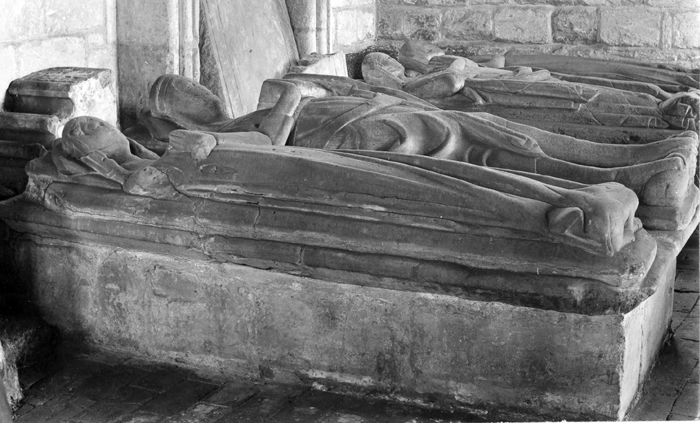 |
| The male figure is that of Sir
Richard Willoughby (1325) His wife is on his right and there are a further two ladies to his left. The ladies are c. 1300; one has her head on pillows, the other is supported by angels. All look to be on modern plinths |
| There are other medieval effigies in the
church: Sir Richard Willoughby (1369) on modern plinth ; alabaster Sir Hugh Willoughby (1448) and his second wife, Margaret (Freville) . Alabaster effigies on original alabaster tomb chest, with angels holding shields. Sir Richard Willoughby (1362) Chief justice; alabaster effigy on alabaster tomb chest with shields. And two incised slabs: Isabel Foljmabe (1417) First wife of Sir Hugh, above Hugh Willoughy (1329) Priest, rector |
 |
Worksop Priory Church of Saints Cuthbert and Mary |
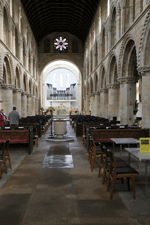 |
| The church is now locked except when someone
is in attendance. It is best to contact the church wardern who
will be happy to open it for you. There is limited parking in the
grounds of the church. O/S Ref: SK 590 786 |
 |
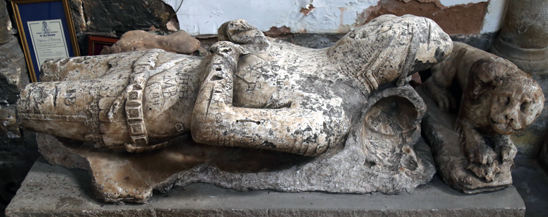 |
 |
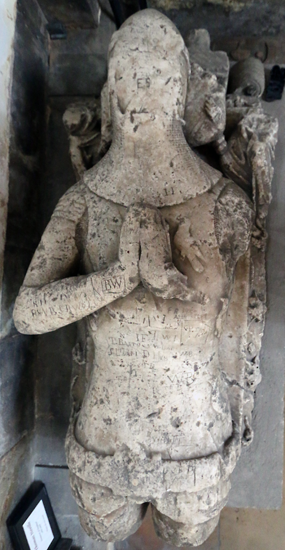 |
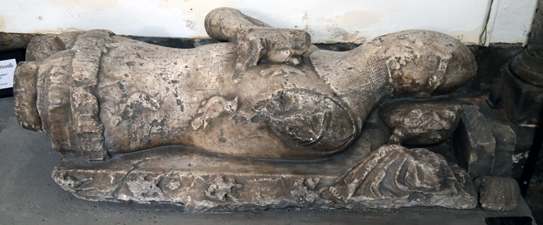 |
|||
| Defaced alabaster
effigies, their tomb chests long gone, now well displayed on the
floor on the south wall of nave near the south door. Far left and below: Lady Joan Neville (Furnival) , wife of Sir Thomas. Above left top & above centre: Thomas Lord Furnival (1366), brother of Lady Joan . Above left bottom & above right: Sir Thomas Neville, Lord Furnival, jute uxoris (1406) High treasurer of England |
|||

I

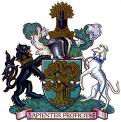
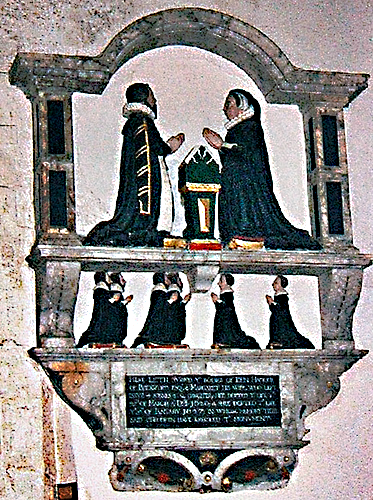
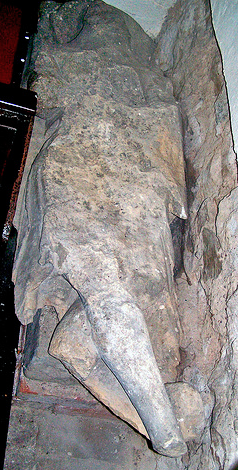
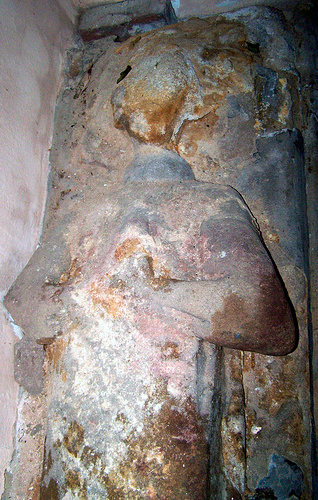

.png)


